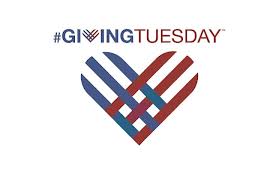 Sorry about not posting something this morning, but I got to my hotel late last night (around midnight) and I was up five hours later for a 6:00 prospect identification/evaluation meeting. My request of Santa this year is more time added to the day and a few more weeks added on to the year. 🙂
Sorry about not posting something this morning, but I got to my hotel late last night (around midnight) and I was up five hours later for a 6:00 prospect identification/evaluation meeting. My request of Santa this year is more time added to the day and a few more weeks added on to the year. 🙂
However, when I got out of my early morning meetings and checked my overflowing email inbox, I was reminded that today is #GivingTuesday. I couldn’t have forgotten it even if I wanted because I had a ton of non-profit emails reminding me. I’m not kidding when I tell you that between my emails, LinkedIn messages, and Twitter and Facebook feeds, I must have received 25 personalized solicitations.
Being sleep deprived and generally a softy when it comes to charitable giving, I decided to make my first ever #GivingTuesday donation. So, I weeded through all of the online solicitations and chose the one that I liked most and aligned with what I support.
Drum roll please? 🙂
Congratulations to United Way of Elgin!
Here is the text/copy of what they sent me in a Constant Contact solicitation:
Today is #GivingTuesday–Let’s ALL Make a Difference Today!
#GivingTuesday is an international movement to honor the spirit of giving during the holiday season. After the craziness of Black Friday and Cyber Monday, #GivingTuesday reminds us that we are part of something bigger, and that everyone plays a part in making our world a better place.
Join United Way of Elgin in celebrating this day dedicated to giving back. You can participate instantly with a $30 gift to the Dolly Parton Imagination Library program, which provides one free book each month to children under five in our community. Over 4,200 children received books through the DPIL in 2014–help us reach even more kids in 2015!
No matter how you choose to be a part of #GivingTuesday, remember that when you reach out a hand to one, you influence the condition of all. THANK YOU!!
I must admit that my charitable gift felt like an “impulse buy” like one I might have made on Black Friday because I obviously wasn’t planning on making this gift.
Hmmmmmm? Black Friday? #GivingTuesday?
I suspect a light just went off above my head.
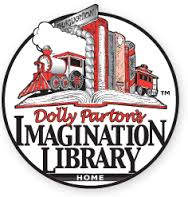 Successful #GivingTuesday solicitations probably utilize some of the same strategies that for-profits use to create the conditions for an impulse buy. Now it all makes sense. (I might not be quick, but I usually get there.) 🙂
Successful #GivingTuesday solicitations probably utilize some of the same strategies that for-profits use to create the conditions for an impulse buy. Now it all makes sense. (I might not be quick, but I usually get there.) 🙂
So, here is what I really like about the United Way of Elgin’s #GivingTuesday solicitation:
- It was big and colorful, which captured my attention
- There was a picture that told most of the story
- They asked for a specific dollar amount, which allowed me to not think about it very long.
- It was project focused and very specific
- The case for support was understandable in a few simple sentences
- There were multiple links to the DonateNow page (so if I wasn’t ready to click after seeing the first link there were other opportunities late in the letter)
- The letter was short, sweet and to the point . . . easy to read in a matter of seconds
Haven’t made your #GivingTuesday gift yet? There is still time left! Can’t figure out who to support? Why not click-through and check out United Way of Elgin’s Dolly Parton Imagination Library? It will warm your heart to invest in early childhood education and literacy. It did mine!
Did your organization participate in #GivingTuesday? If so, what worked for you? What didn’t work? Please scroll down and share your thoughts and experiences in the comment box below.
Here’s to your health!
Erik Anderson
Founder & President, The Healthy Non-Profit LLC
www.thehealthynonprofit.com
erik@thehealthynonprofit.com
http://twitter.com/#!/eanderson847
http://www.facebook.com/eanderson847
http://www.linkedin.com/in/erikanderson847

 We are just a few days away from Thanksgiving, and I’m getting in touch with my gratitude muscles this week. If you’re anything like me then you’re probably a “lifelong learner” and love to read about bigger and better ways to engage donors and practice the art of resource development. One of the ways I feed my need to learn is reading other non-profit bloggers. Today’s post is dedicated to some of my absolute favs.
We are just a few days away from Thanksgiving, and I’m getting in touch with my gratitude muscles this week. If you’re anything like me then you’re probably a “lifelong learner” and love to read about bigger and better ways to engage donors and practice the art of resource development. One of the ways I feed my need to learn is reading other non-profit bloggers. Today’s post is dedicated to some of my absolute favs. Thanksgiving is a time when many non-profit organizations give thanks to their donors who support their mission with their time and money. Over the years, I’ve received Thanksgiving cards, thank-a-thon phone calls, and even a small little gift of gratitude from my favorite charities. However, the ALS #IceBucketChallenge has changed everything and set the bar higher for all resource development activities. So, I’ve spent days (if not weeks) thinking about how to use social media to steward donors during this time of the year. This morning I think I had my best idea yet. Let’s see what you think.
Thanksgiving is a time when many non-profit organizations give thanks to their donors who support their mission with their time and money. Over the years, I’ve received Thanksgiving cards, thank-a-thon phone calls, and even a small little gift of gratitude from my favorite charities. However, the ALS #IceBucketChallenge has changed everything and set the bar higher for all resource development activities. So, I’ve spent days (if not weeks) thinking about how to use social media to steward donors during this time of the year. This morning I think I had my best idea yet. Let’s see what you think. AND THEN IT HAPPENS . . .
AND THEN IT HAPPENS . . . If there is one thing all of us should’ve learned from the ALS #IceBucketChallenge, it is that social media is a powerful tool in our resource development toolbox. While we’re all still learning how to use this tool, those who innovate and try new things will surely reap the rewards.
If there is one thing all of us should’ve learned from the ALS #IceBucketChallenge, it is that social media is a powerful tool in our resource development toolbox. While we’re all still learning how to use this tool, those who innovate and try new things will surely reap the rewards. A few weeks ago I facilitated a training session titled “2014 Finish Strong: Year-End Strategies” for a group of non-profit professionals in New Mexico. Long story short . . . there were LOTS of things that non-profits try to do in the fourth quarter. Participants shared with each other what they were doing back home at their agency and we collectively talked about best practices.
A few weeks ago I facilitated a training session titled “2014 Finish Strong: Year-End Strategies” for a group of non-profit professionals in New Mexico. Long story short . . . there were LOTS of things that non-profits try to do in the fourth quarter. Participants shared with each other what they were doing back home at their agency and we collectively talked about best practices. As you know, there is no such thing as a unicorn. It is a mythical creature and the inspiration for this morning’s post about various fundraising policies and procedures documents that everyone says are important but rarely exists on the front line of many (especially smaller) social services non-profit agencies. I thought it might be a good idea to name these “unicorns” and explain what they are and why they’re important.
As you know, there is no such thing as a unicorn. It is a mythical creature and the inspiration for this morning’s post about various fundraising policies and procedures documents that everyone says are important but rarely exists on the front line of many (especially smaller) social services non-profit agencies. I thought it might be a good idea to name these “unicorns” and explain what they are and why they’re important.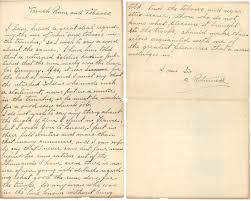 One of the many projects I’m currently working on involves cataloging a resource development toolbox for a client. The things I’m finding in that toolbox are amazing and include: samples,templates, whitepapers, training curricula, calculators, and even an online wizard to help with resource development planning. (Cool stuff!)
One of the many projects I’m currently working on involves cataloging a resource development toolbox for a client. The things I’m finding in that toolbox are amazing and include: samples,templates, whitepapers, training curricula, calculators, and even an online wizard to help with resource development planning. (Cool stuff!)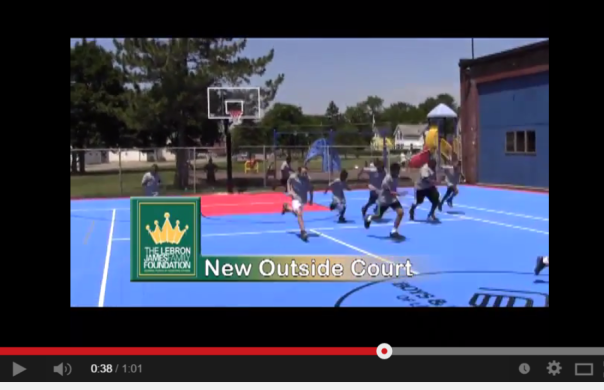
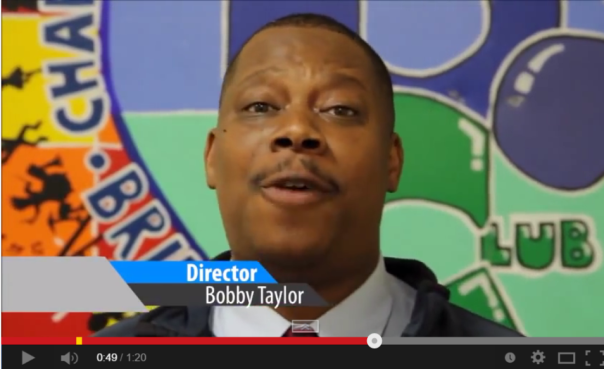
 I was on the phone with an old friend a few days ago, and our conversation turned to two naming opportunities with which he was struggling. One situation dealt with naming his agency’s golf outing after an aging volunteer who is the central organizing force behind the event. The other situation pertained to a planned giving prospect who is contemplating the possibility of leaving a very large legacy gift.
I was on the phone with an old friend a few days ago, and our conversation turned to two naming opportunities with which he was struggling. One situation dealt with naming his agency’s golf outing after an aging volunteer who is the central organizing force behind the event. The other situation pertained to a planned giving prospect who is contemplating the possibility of leaving a very large legacy gift. Finally, have you thought about the permanent nature of putting someone’s name on something and what happens when life throws your agency a curveball? If I’m being too cryptic at this time in the morning, I want you to think about what you would’ve done if you had accepted large donations with naming opportunities from either of these infamous gentlemen:
Finally, have you thought about the permanent nature of putting someone’s name on something and what happens when life throws your agency a curveball? If I’m being too cryptic at this time in the morning, I want you to think about what you would’ve done if you had accepted large donations with naming opportunities from either of these infamous gentlemen: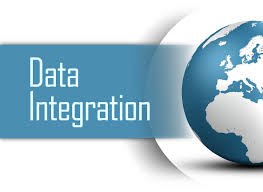 One of my many jobs in this world is being the webmaster and community manager for a large national organization’s resource development website, which essentially acts as a fundraising toolbox for their local affiliates. One of the many functions of the website is an “Ask the Expert” service where front line staff can ask resource development questions and receive an answer in approximately 24 hours. A few weeks ago a question was asked about donor databases and QuickBooks Online. While I’m happy with our answer, I’m wondering if there isn’t more advice that could’ve been provided.
One of my many jobs in this world is being the webmaster and community manager for a large national organization’s resource development website, which essentially acts as a fundraising toolbox for their local affiliates. One of the many functions of the website is an “Ask the Expert” service where front line staff can ask resource development questions and receive an answer in approximately 24 hours. A few weeks ago a question was asked about donor databases and QuickBooks Online. While I’m happy with our answer, I’m wondering if there isn’t more advice that could’ve been provided.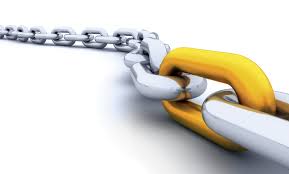 OK . . . you’ve had a chance to read the question and answer. What additional advice would you have provided? Do you use QuickBooks Online and a donor database with a data integration bridge? If so, what can you tell us about the data bridge and the database (or CRM)?
OK . . . you’ve had a chance to read the question and answer. What additional advice would you have provided? Do you use QuickBooks Online and a donor database with a data integration bridge? If so, what can you tell us about the data bridge and the database (or CRM)? There has been lots written throughout the years about the psychology of philanthropy. Most of the stuff I’ve read has been right on target with regards to why people open their wallets/purses and give money to a non-profit organization. I’ve been asked to revise a whitepaper titled “Why People Do and Don’t Give Money” for a national organization’s online fundraising toolbox to which their local affiliates have access. So, I thought I’d ask you and the rest of the DonorDreams blog community for a little help this morning. Would you please be so kind and give me one minute (or less) of your time at the end of this post?
There has been lots written throughout the years about the psychology of philanthropy. Most of the stuff I’ve read has been right on target with regards to why people open their wallets/purses and give money to a non-profit organization. I’ve been asked to revise a whitepaper titled “Why People Do and Don’t Give Money” for a national organization’s online fundraising toolbox to which their local affiliates have access. So, I thought I’d ask you and the rest of the DonorDreams blog community for a little help this morning. Would you please be so kind and give me one minute (or less) of your time at the end of this post?